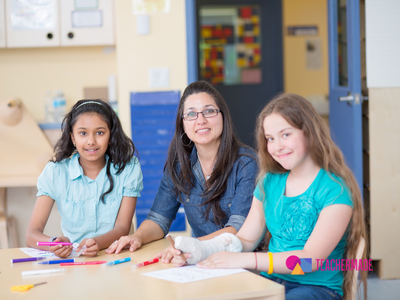Have you ever sat down after a lesson, hoarse and perhaps discouraged because you feel your students just didn’t “get” the content of your lecture?
Do you sometimes wonder if students would thrive just by Googling the answers to their questions?
Or maybe you’ve had difficulty finding enough time to practice and apply all the knowledge your students are acquiring.
If any of these apply to you and your teaching experience, self-paced learning or flipped classroom methods could be the solution you’re looking for in the classroom. These two approaches emphasize the student’s role in education and highlight the importance of the learner’s agency and responsibility throughout each learning experience.
Let’s look at self-paced learning, the flipped classroom and how these two methods can breathe new life into your instructional practice.

Self-paced learning (sometimes called “self-paced instruction”) is a method of teaching that relies on learner response for its timing. This means that the learner is the one who — by submitting assessments, check-in assignments, or answers to content-related questions — drives the speed of their own instruction. Learners receive new content or information only as they master the previous content in their own time.
The application of self-paced learning is flexible and totally up to the teacher. Self-paced learning can happen in the classroom or during individual study; teachers can take a self-paced approach for some activities while sticking with a whole-class approach.
The most significant benefit of self-paced learning is individualization and differentiation. Most instructors offer many different activities and levels of activity for students to choose from. This way, students can choose relevant activities that appeal to their interests (which can boost intrinsic motivation) and suit their learning needs.
Another huge benefit of self-paced learning — especially in the classroom — is how it redefines the role of the instructor. During self-paced learning activities, the teacher is free to roam around the room, answer specific questions, and offer personalized feedback to every student. This shift from “instructions explainer” to learning facilitator makes the learning experience more effective and satisfying for students and teachers.
Many other benefits of self-paced learning can extend beyond the classroom, too. For instance, some studies suggest that students’ self-confidence and self-regulation skills can get a nice boost from the consistent self-paced study.
A flipped classroom is one where teachers don’t spend time lecturing. Instead, the instructor provides students with materials (such as books, articles, and videos) that explain the knowledge or skill that aligns with their learning goals.
Then, when students return to the classroom for synchronous lessons, students and instructors spend most of the class time applying the knowledge and skills they’ve studied before coming to class. Synchronous lesson times are dedicated to applying knowledge and practicing skills already taught asynchronously before the class session.
In this way, the instruction is “flipped.” Rather than coming to a synchronous class to hear a lecture about content knowledge and then going home to do asynchronous homework activities to apply or practice this knowledge, students get to do the application and practice in a collaborative classroom environment.
While there are several differences between self-paced learning and the flipped classroom, there is also quite a bit of overlap. Some of the elements shared by self-paced learning and the flipped classroom learning models are below.
Both self-paced learning and flipped classroom instruction offer plenty of flexibility, especially regarding asynchronous portions of the instruction. Students are free to engage with the class materials whenever they want, wherever they are, and at any speed they please.
One principle of self-paced learning and the flipped classroom is the students’ ability to access the learning materials (such as texts, lectures, videos, or interactive units) at every stage of the learning process. They can always refer to these learning materials, which encourages students to consistently and effectively use the instructor’s information asynchronously.
When a teacher applies self-paced or flipped classroom methods, the students have choices about their own learning. These can include choosing a medium of instruction or prioritizing one activity over another. As students make these choices, they exercise self-regulated learning skills while also experiencing a boost in motivation, self-confidence, and self-reliance.
The most general and long-term effect of self-paced learning and flipped classroom methods is that it helps to drastically shift students’ perception of their own role in the learning process. These two approaches encourage students to take ownership and responsibility for their learning rather than just passively absorbing information from the instructor.
Self-paced learning goes against the traditional norms of education. So it will take time to get it right in your classroom. Don’t waste time using the wrong tools. You will need an assignment and worksheet creator that works smarter (not harder!). With TeacherMade, you can:
With TeacherMade, you and your students enjoy added flexibility with learning that fits their pace.